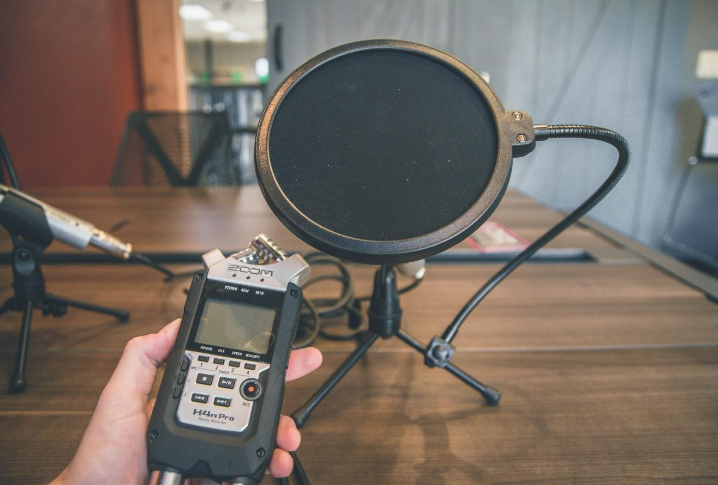It’s easy to underestimate the importance of sound in influencing the audience’s experience in the compelling world of film, where visual narrative takes center stage. Sound, which is frequently overlooked, is a powerful instrument that can take a picture from decent to great by immersing viewers in the story’s emotions and complexities. Understanding the powerful influence of sound and how to master its application is a must for both filmmakers and audiophiles.
In cinema, the combination of music and sights provides a multidimensional experience that stimulates both our senses and emotions. A film’s aural cues, which include speech, music, and ambient sounds, have the capacity to transport us to another world and make us feel as if we are right there with the characters.
This symbiotic link is especially visible in horror films, when a well-timed creaking floorboard or a haunting song may instill spine-chilling anxiety. Similarly, in romantic moments, a gentle breeze or a tender music can elicit a rush of emotion that enhances the visual narrative.
To master the art of sound in cinema, one must first have a thorough awareness of the various layers of sound effects. Dialogue is the foundation of storytelling, conveying important information about characters, relationships, and plot developments. Achieving clear and understandable conversation is critical, which often necessitates meticulous sound recording during filming and skilled editing during post-production.
Beyond speaking, however, exists the world of ambient sounds, sometimes known as “foley.” To enhance the authenticity of a scene, foley artists replicate sounds such as footsteps, rustling foliage, and clinking glasses. These minor elements, which are sometimes unnoticed, contribute greatly to the film’s realism and emotional effect. Furthermore, music is a powerful emotional catalyst, elevating the mood and guiding the audience’s emotional journey. Composers and music supervisors must create a score that complements the images while boosting the appropriate emotions in each scene.
Technological advancements have transformed film sound design. Dolby Atmos, for example, allows sound to travel about the audience in real time, producing a three-dimensional audio experience.
This technology enhances immersion by letting viewers to feel the swoosh of a passing car or rainfall falling all around them. To fully realize the potential of new technologies, filmmakers must work closely with sound engineers and designers to ensure that every aural aspect is in sync with the desired image.
Recognizing sound’s importance as a storytelling tool is a critical component of perfecting sound in cinema. Sound can transmit information that vision alone may overlook, giving characters and environments dimension. The distinct sound of a door latch clicking shut might imply secrecy or tension, yet children’s giggling can inspire nostalgia or innocence. Filmmakers must wield these auditory cues intentionally, weaving them seamlessly into the narrative fabric to enrich the storytelling experience.
Silence, too, is an enticing aspect of sound design. Strategic silence can inspire tension or expectation in the same way that music might. The lack of sound can be as effective as the presence of sound, allowing viewers to focus on visual signals and magnifying the impact of later sound. Alfred Hitchcock, for example, was a master of employing quiet to build suspense, allowing the audience’s imagination to run wild before shocking them with a sudden rush of sound.
A well-crafted soundscape necessitates careful attention to detail during the post-production process. Sound editing and mixing pros fine-tune each piece, altering levels, improving clarity, and flawlessly merging sounds. Balancing the conversation, effects, and music is a delicate dance that requires a trained ear and a thorough understanding of how various sounds interact. The idea is to create an aural experience that seems natural and immersive while directing the audience’s attention to the visual narrative.
Aspiring filmmakers who want to master cinematic sound can embark on a varied journey. Formal education in film production or sound design can provide a solid basis, but practical experience is also essential. Experimenting with various recording techniques, microphones, and post-production tools can lead to the discovery of novel ways to modify sound for dramatic effect. Furthermore, studying the work of prominent sound designers and seeing films with a sensitive ear helps broaden one’s awareness for the nuances of sound in film.
Finally, the importance of sound in cinema cannot be emphasized. Sound is an essential component of the cinematic experience, from its power to provoke emotions to its position as a narrative tool. Filmmakers must understand the various layers of sound, leverage the potential of advanced technologies, and embrace sound as a storytelling collaborator in order to master sound in cinema. Creators may lift their works to new heights, captivating audiences in ways that words and visuals alone could never achieve, with devotion, expertise, and a great awareness for the auditory dimension of filmmaking.
Sound, which is frequently overlooked, is a powerful instrument that can take a picture from decent to great by immersing viewers in the story’s emotions and complexities. A film’s aural cues, which include speech, music, and ambient sounds, have the capacity to transport us to another world and make us feel as if we are right there with the characters. Achieving clear and understandable conversation is critical, which often necessitates meticulous sound recording during filming and skilled editing during post-production.
To enhance the authenticity of a scene, foley artists replicate sounds such as footsteps, rustling foliage, and clinking glasses. Furthermore, music is a powerful emotional catalyst, elevating the mood and guiding the audience’s emotional journey.

